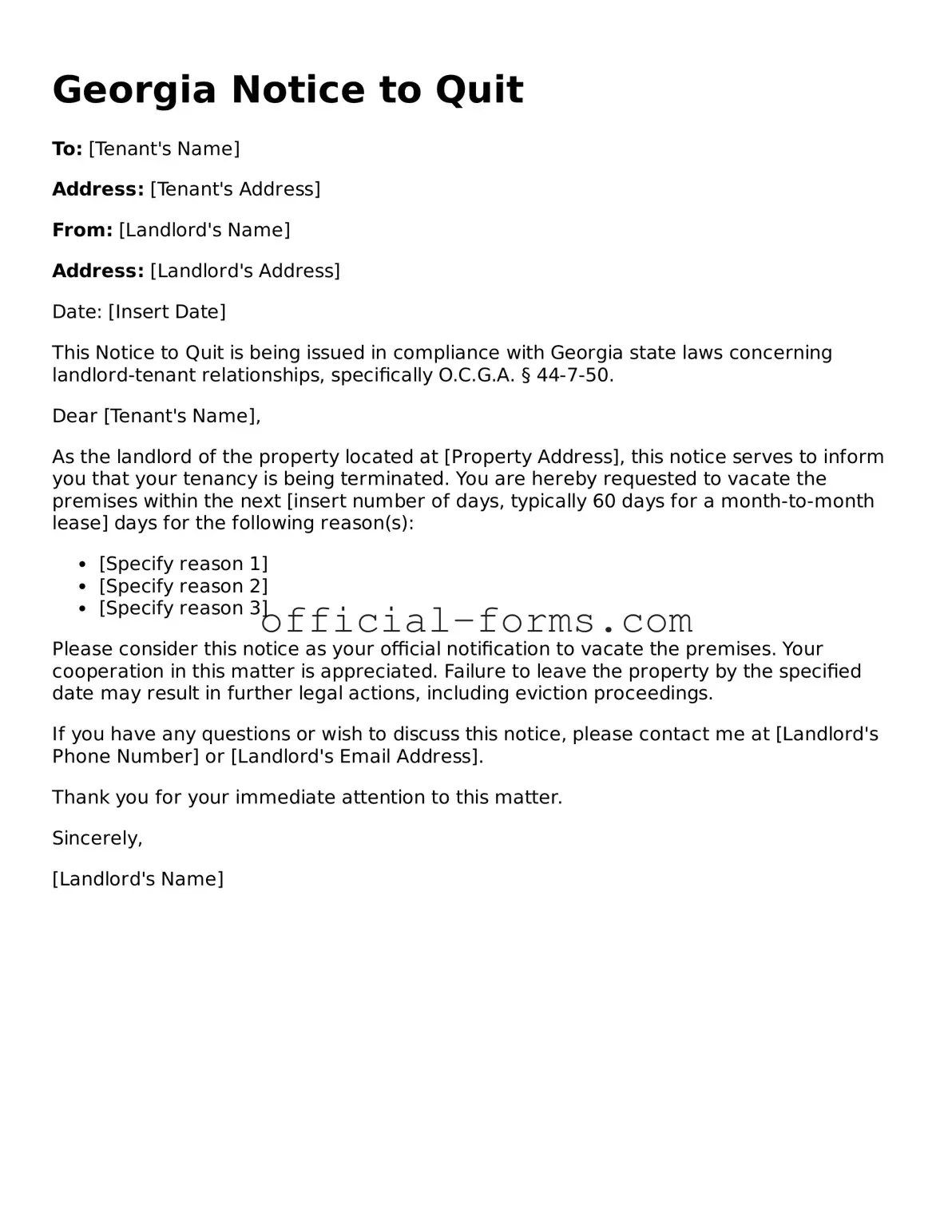Filling out the Georgia Notice to Quit form can be a straightforward process, but many individuals make common mistakes that can lead to complications. Understanding these pitfalls can help ensure that the form is completed correctly and effectively. Here are ten mistakes to avoid.
One frequent error is failing to provide accurate information about the tenant. It's crucial to include the full name of the tenant as it appears in the lease agreement. Omitting middle names or initials can lead to confusion and may delay the eviction process.
Another common mistake is neglecting to specify the reason for the notice. In Georgia, landlords must state the grounds for eviction clearly. Whether it’s non-payment of rent or a lease violation, clarity is key. A vague reason can render the notice ineffective.
Many people overlook the importance of the date. The notice should include the date it is issued. This date is essential for establishing a timeline for the eviction process. Without it, the notice may not be considered valid.
Additionally, some individuals forget to sign the notice. A signature is not just a formality; it signifies that the landlord is formally initiating the eviction process. An unsigned notice can lead to legal challenges and delays.
Providing the wrong address is another mistake that can create issues. The notice must be sent to the tenant's current address, not just the address listed on the lease. If the tenant has moved, the notice may not reach them, complicating the eviction process.
People sometimes fail to deliver the notice correctly. In Georgia, the law requires that the notice be delivered in person or sent via certified mail. Skipping this step can lead to questions about whether the tenant received the notice at all.
Another oversight is not allowing enough time for the tenant to respond. Georgia law stipulates specific timeframes for tenants to vacate the premises. Failing to respect these timeframes can lead to further legal complications.
Some landlords also forget to keep a copy of the notice for their records. Documenting the process is vital, especially if the eviction leads to court proceedings. Having a copy can provide essential proof of the notice's issuance.
Moreover, neglecting to check local laws can be detrimental. While the Georgia Notice to Quit form is standardized, local ordinances may have additional requirements. Ignoring these can result in an invalid notice.
Finally, not seeking legal advice when unsure can lead to mistakes. The eviction process can be complex, and having professional guidance can help navigate any uncertainties. Consulting with a legal advisor can save time and prevent costly errors.
